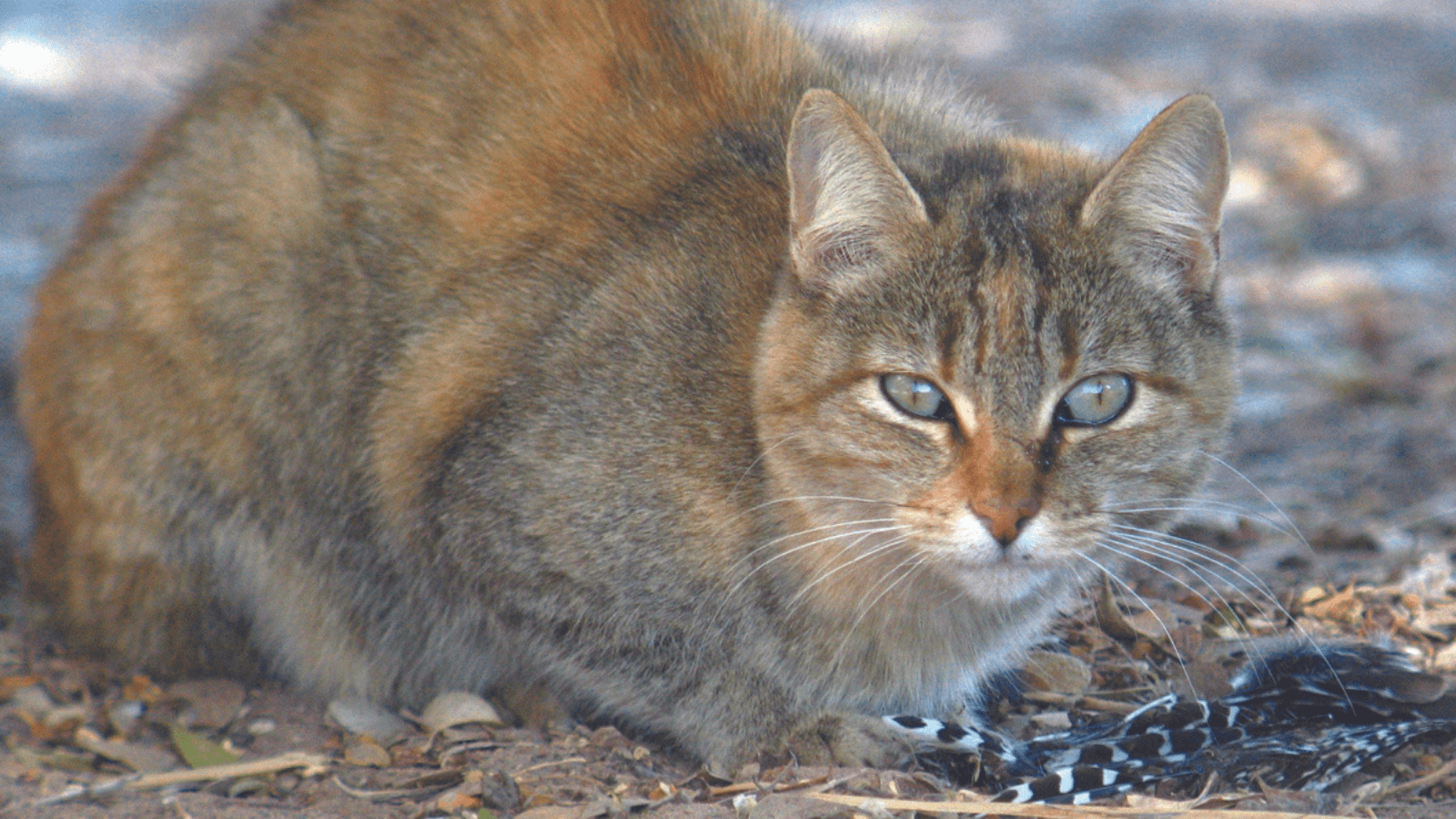Experts Urge a Scientific Approach to Free-Roaming Cat Management

Domestic cats (Felis catus) are beloved pets to people around the world, but cats that roam outdoors can have devastating impacts. Cats have contributed to the extinction of 63 species and, in the U.S. alone, are the number-one direct human-caused threat to birds, killing an estimated 2.4 billion birds every year. Cats are also a transmission risk for a variety of parasites and diseases, such as rabies and toxoplasmosis.
A recent study published by an international group of leading scientists in the journal Biological Invasions calls on policymakers to adhere to science-based decision-making and manage domestic cats as an invasive species.
According to U.S. federal policy, an invasive species is one whose introduction to a new environment “causes or is likely to cause economic or environmental harm, or harm to human, animal, or plant health.” Cats meet this definition, but they have been largely absent from both state and national invasive species lists.
“Cats can be wonderful pets, but cats that roam outdoors function as invasive predators that kill wildlife and disrupt ecosystems,” said Grant Sizemore, ABC's Director of Invasive Species Programs and coauthor of the study. “It is long past time that we implement cat management solutions that take into consideration not just the outcome for individual cats but also the health and welfare of the billions of impacted wild animals, as well as the communities where these cats roam.”
According to the study authors, policymakers have too frequently turned to a program known as “trap, neuter, release” (TNR) in their attempts to manage feral cat populations. TNR programs trap, sterilize, and then release cats to roam outdoors. The science, however, has shown that TNR programs fail to reliably reduce cat populations and purposely maintain cats roaming outdoors, where they continue to harm wildlife and contribute to human health risks.
Even programs that have invested hundreds of thousands of dollars in TNR over several years have failed to reduce free-roaming cat numbers, according to the study. Meanwhile, the cats themselves are subject to harsh weather, threats like cars, and other struggles.
The study outlines four science-based strategies that could reduce the ecological impacts of roaming outdoor cats, thereby saving the lives of billions of birds and other wildlife in the U.S. each year, as well as reducing human health risks. These include:
- Prioritizing responsible cat ownership practices that will prevent cats from roaming the landscape.
- Reducing the number of cats that are abandoned outdoors.
- Eliminating outdoor cat feeding and TNR programs.
- Holding cat management organizations accountable for meeting cat population reduction objectives.
Instead of relying on TNR, the study authors argue, policies at the local, state, and federal levels should first focus on strategies that prevent cats from a life roaming outdoors. Such policies and practices could include mandatory cat sterilization and microchipping laws, cat licensing that officially registers each pet and links it to an owner, and policies that encourage cats to remain indoors or under owner supervision (using tools like leashes and “catios”).
“Cats have for too long been considered disposable pets, and cat management programs that systematically abandon cats, such as TNR, only reinforce this perspective,” said Sizemore. “It's time to hold ourselves to a higher standard and to treat cats more like we treat dogs.”
The authors recommend that government agencies at every level should ban outdoor cat feeding sites and TNR as a population management strategy, since it is not supported by science. Instead, they recommend that policies should focus on actively removing cats from the landscape, with a goal of rehoming as many cats as possible.
Finally, any program implemented to manage cat populations should be required to clearly state its goals and objectives and track data on program effectiveness. This will ensure that programs are held accountable and that successes can be more easily replicated in the future.
“Clearly, we have a ways to go to effectively tackle the outdoor cat crisis, but recognizing the role of cats as an invasive species and choosing science-based management strategies can help to protect cats, wildlife, and people,” Sizemore said.
###
American Bird Conservancy is a nonprofit organization dedicated to conserving wild birds and their habitats throughout the Americas. With an emphasis on achieving results and working in partnership, we take on the greatest problems facing birds today, innovating and building on rapid advancements in science to halt extinctions, protect habitats, eliminate threats, and build capacity for bird conservation. Find us on abcbirds.org, Facebook, Instagram, and X/Twitter (@ABCbirds).
Media Contact
Jordan Rutter
Director of Communications
media@abcbirds.org


















































